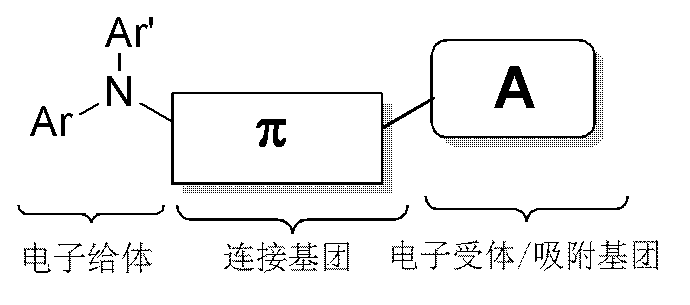High efficiency dye-sensitized solar cells
A technology for solar cells and dye sensitization, applied in the field of dye-sensitized solar cells, can solve problems such as limiting the scale of dye-sensitized solar cells, and achieve the effects of improving photoelectric conversion efficiency, increasing stability, and reducing series resistance
- Summary
- Abstract
- Description
- Claims
- Application Information
AI Technical Summary
Problems solved by technology
Method used
Image
Examples
Embodiment
[0075] experimental method
[0076] All reagents were purchased from Sigma Aldrich unless otherwise stated.
[0077] Synthesis of cobalt complexes. Cobalt complex [Co(bpy) 3 (PF) 2 ] 2+ 、[Co(dmb) 3 (PF 6 ) 2 ] 2+ 、[Co(dtb) 3 (PF 6 ) 2 ] 2+ and [Co(phen) 3 (PF 6 ) 2 ] 2+ Synthesized by methods described elsewhere [see Sapp, S.A.; Elliott, C.M.; Contado, C.; Caramori, S.; Bignozzi, C.A.J.Am.Chem.Soc. Phys.Chem.C 2009, 113, 14040]. In simple terms, one equivalent of CoCl 2 .6H 2 0 and 3.3 equivalents of bipyridine ligand were dissolved in a minimum of methanol (Merck) and the solution was stirred at reflux for 2 hours. Then excess ammonium hexafluorophosphate (NH 4 PF 6 ) was added to the solution to give the precipitated compound which was filtered, washed with methanol and ethanol, dried under vacuum and used without further purification.
[0078] The oxidation of cobalt complex is to add slightly excess NOBF in the acetonitrile solvent of cobalt complex 4 ...
PUM
 Login to View More
Login to View More Abstract
Description
Claims
Application Information
 Login to View More
Login to View More - R&D
- Intellectual Property
- Life Sciences
- Materials
- Tech Scout
- Unparalleled Data Quality
- Higher Quality Content
- 60% Fewer Hallucinations
Browse by: Latest US Patents, China's latest patents, Technical Efficacy Thesaurus, Application Domain, Technology Topic, Popular Technical Reports.
© 2025 PatSnap. All rights reserved.Legal|Privacy policy|Modern Slavery Act Transparency Statement|Sitemap|About US| Contact US: help@patsnap.com



